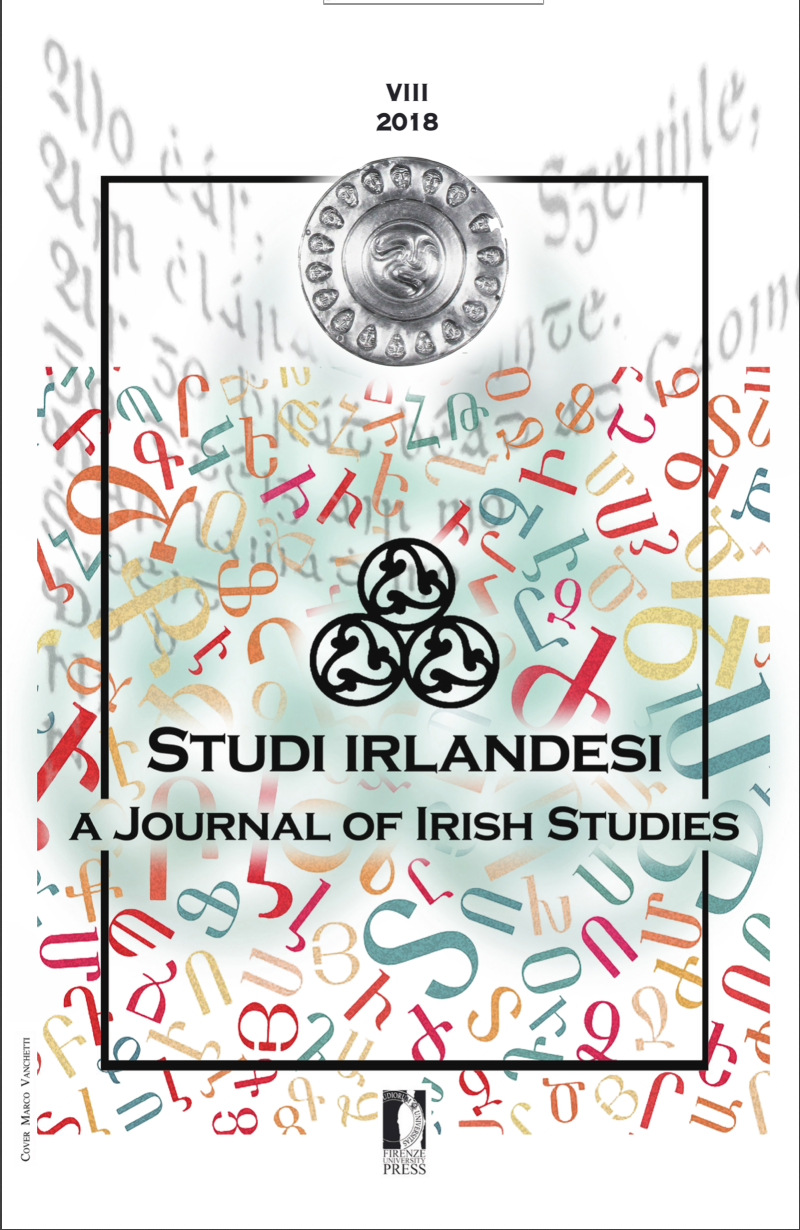Abstract
This essay deals with a number of works by poets, playwrights and novelists who tackled the theme of the Irish participation to World War One. The crucial point was about the divided loyalties of Irish soldiers enlisted in the British Army at a time when Ireland was at first fighting for Home Rule and later, on Easter 1916, engaged in a hopeless but decisive uprising. Can literature change the world? Yeats invited the poet to remain disdainfully silent in time of war but, notwithstanding this, was forced to deal with its painful consequences because of the death of Major Gregory, son of his dear friend Lady Augusta. Sean O’Casey had a totally different approach to the theme, using the theatre to create a collective response to its futility. Some decades later Frank McGuinness in one of his most successful plays maintains that “Invention gives that slaughter shape”. Francis Ledwige who died on the Belgian front, the only Irish “war poet”, gave “shape” in his poems to his own divided loyalties to Britain and Ireland, becoming years later a source of inspiration for Seamus Heaney, trapped in the Troubles. The second part of this paper examines novels by Iris Murdoch, Jennifer Johnson and Sebastian Barry who have considered an effort of recollection to tell fictional stories set in those ominous years in order to overcome the “collective amnesia” (Boyce, 1993) that tried to exorcise the deaths of so many Irishmen who fought during WWI wearing the “wrong” uniform


